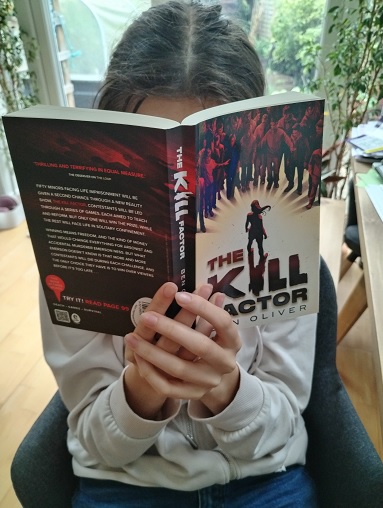What are YA readers looking for?
Posted on Friday, May 17, 2024
Category: News

With just 16% of those aged 14 to 25 reading daily - and only 11% of boys doing so - it's easy to feel that the messages about the benefits of reading for pleasure are missing their mark among teenagers and young adults.
However, research from Farshore and HarperCollins's Annual Review of Children's Reading for Pleasure 2024, which takes a closer look at YA ('young adult') reading habits, also shows that, while they might not read every day, some 25% of this cohort read several times a week, or weekly; in total, 41% of those aged 14-25 years read at least weekly. And while they might not read a lot during their teenage years, many do come back to books once they are into their 20s.
What readers want from YA fiction
Indeed the readership for what is categorised as 'YA fiction' ranges from 14 years up to 27-year-olds. There is a lot to recommend contemporary YA fiction, and it's easy to see why young people are still reading YA novels well into their 20s. What they are looking for, according to Farshore's research, are stories that are relatable and immersive; they also resonate with YA fiction's coming-of-age themes, which remain relevant for them well into their 20s; and they want their books to reflect their own lives and experiences. For younger readers aspiring to true love, that's what they want to read about, while older readers want to remember those first experiences through the fiction they're reading. They also want their own, diverse lives reflected in what they read, and to have a window into the worlds of other people.
Reading for wellbeing
Farshore and HarperCollins' research also tells us that when they do read, some 80% of these 14-25 year-olds read to escape the stresses of life, while 78% read to escape studying. With reading seen as a positive activity for their wellbeing, many also prefer the experience of reading from books rather than adding to their screen time; reading is a positive activity that takes them away from their phones.
Moreover, young adults who read every day feel that 'being a reader' gives them a bookish identity; they are proud to be a reader, enjoy the world of YA social media, and enjoy discussing what they are reading with their friends.
There is, however, still a lot of work to do in order to encourage non-readers to the table. Among younger teenagers aged 11 to 13 years, around 20% read daily (four times a week or more), but nearly one third of this group read less than monthly, or hardly ever.
Among those aged 14-17 years, over half say they have too much schoolwork to read books for fun and daily reading is low at 16% (this figure has, though, been worse in previous years). Additionally, those who 'rarely or never read' has increased across all age groups since 2012 and the highest proportion of children who never read is found among 14 to 17-year-old boys, at 38%.
Read in full the Annual Review of Children's Reading for Pleasure
See also: More screen time, less story time, contribute to decline in reading for pleasure
